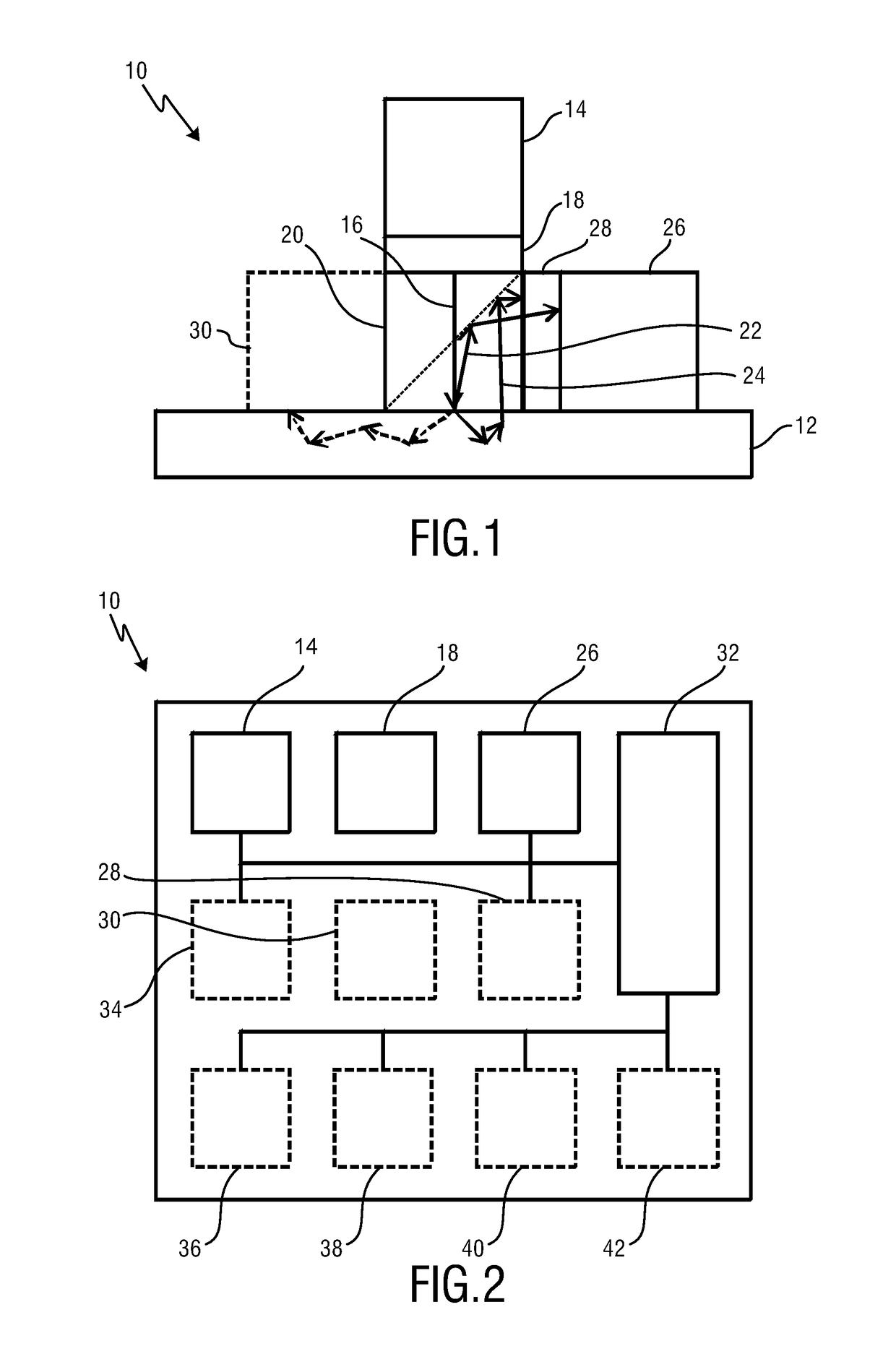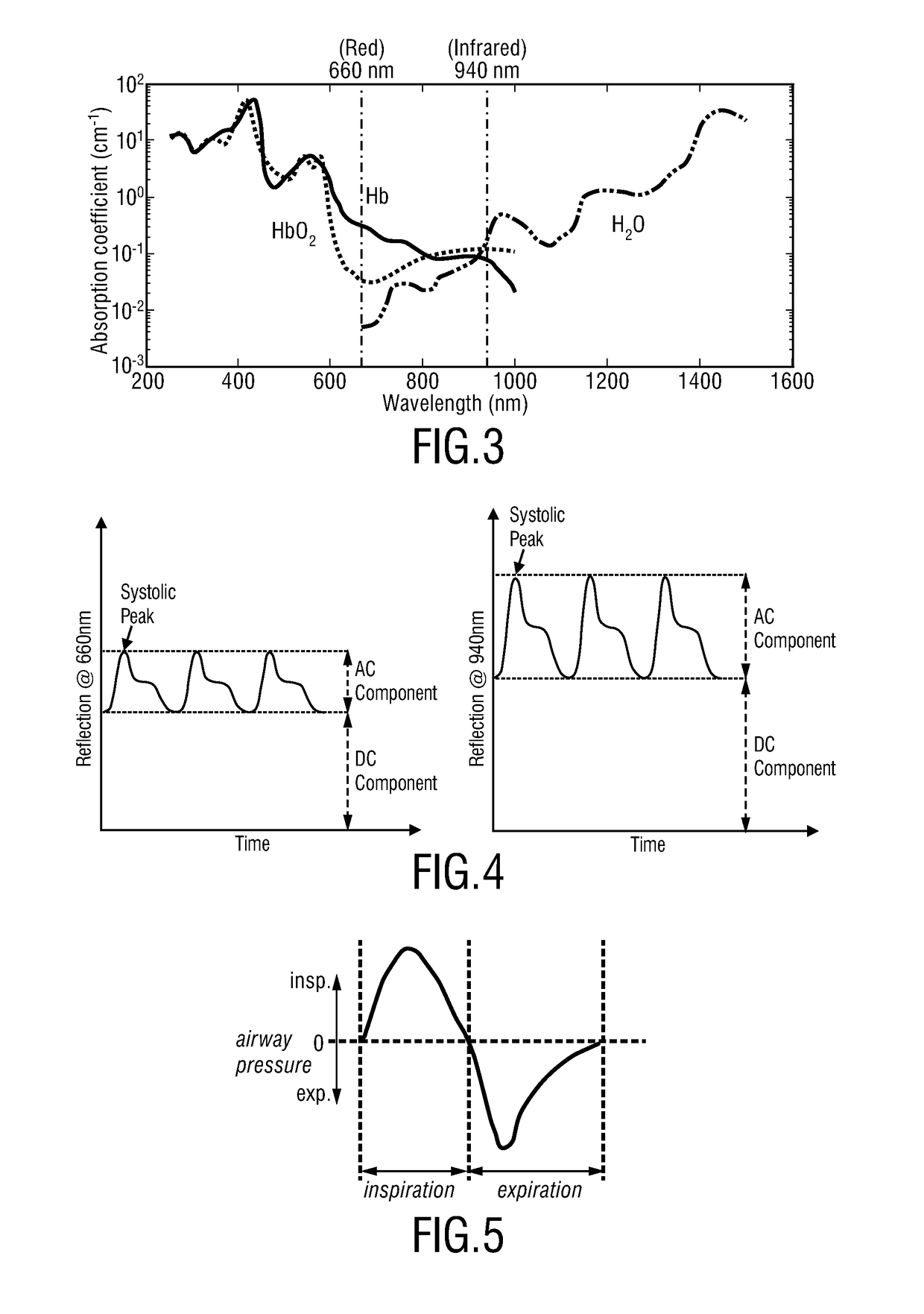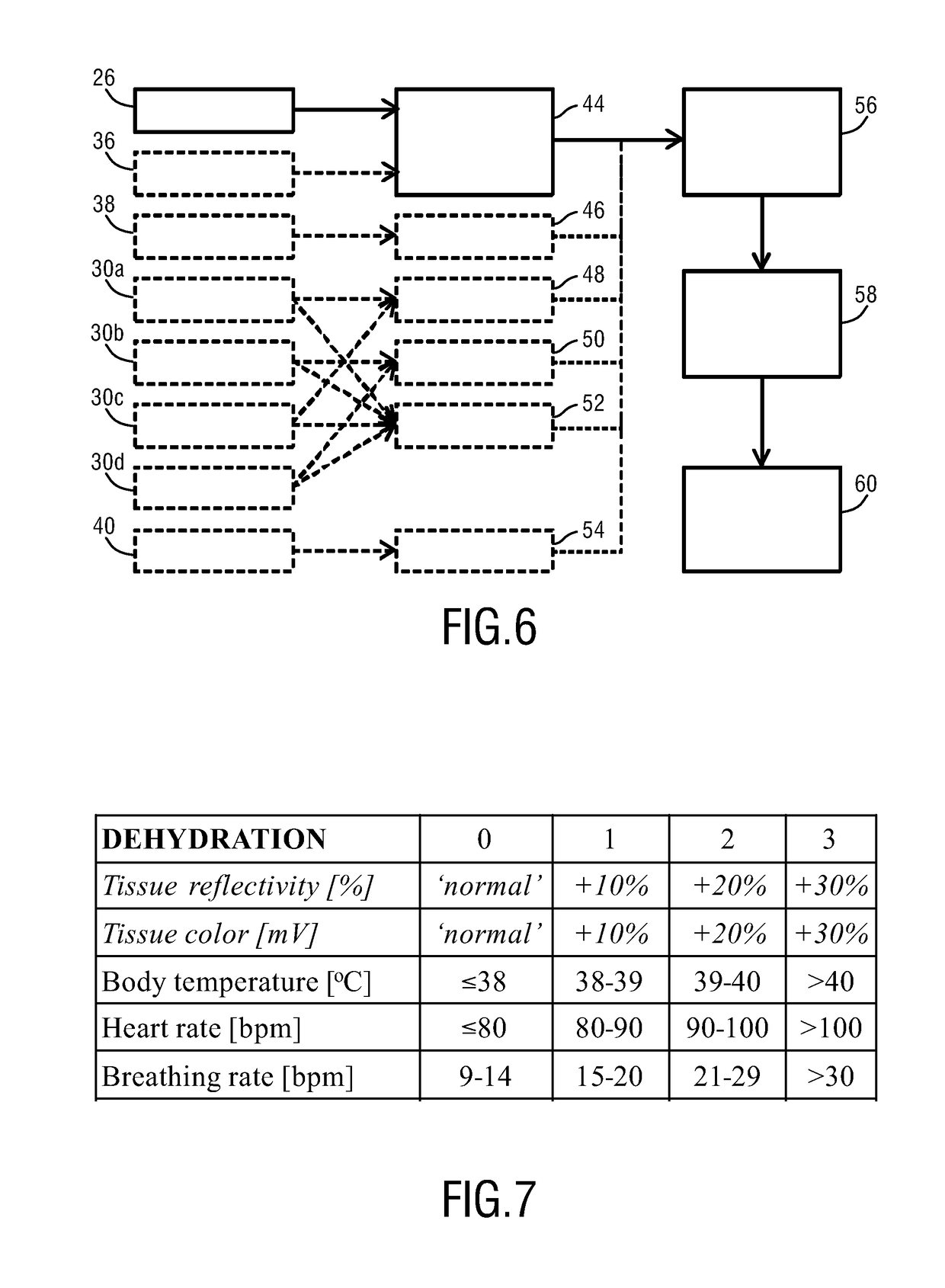Non-invasive dehydration monitoring
a non-invasive, monitoring technology, applied in the direction of measuring/recording heart/pulse rate, medical science, diagnostics, etc., can solve the problems of dehydration, the decline of renal function and thirst perception, and the change in body water composition of older adults, so as to achieve high validity
- Summary
- Abstract
- Description
- Claims
- Application Information
AI Technical Summary
Benefits of technology
Problems solved by technology
Method used
Image
Examples
Embodiment Construction
[0068]In FIG. 1 a device 10 for measuring a hydration state of a living being according to an embodiment of the present invention is illustrated. In order to derive a body hydration index being indicative of the hydration state of the living being, the reflectivity of a tissue portion 12 is assessed. A first light source 14, preferably incorporated by a LED, emits light of a first wavelength into the tissue portion 12. Prior to entering the tissue portion 12, at least part of the light is polarized by means of polarizing means 18. In the embodiment of FIG. 1 the emitted light passes through a beam splitter 20. Thereafter, the emitted light interacts with the tissue portion 12. The interaction particular corresponds to a reflection of a portion of the light at the surface of the tissue portion 12. Another portion of the light may be backscattered. The arrows in FIG. 1 illustrate possible paths of the emitted light 16, the light portion 22 that is directly reflected at the surface and...
PUM
 Login to View More
Login to View More Abstract
Description
Claims
Application Information
 Login to View More
Login to View More - R&D
- Intellectual Property
- Life Sciences
- Materials
- Tech Scout
- Unparalleled Data Quality
- Higher Quality Content
- 60% Fewer Hallucinations
Browse by: Latest US Patents, China's latest patents, Technical Efficacy Thesaurus, Application Domain, Technology Topic, Popular Technical Reports.
© 2025 PatSnap. All rights reserved.Legal|Privacy policy|Modern Slavery Act Transparency Statement|Sitemap|About US| Contact US: help@patsnap.com



